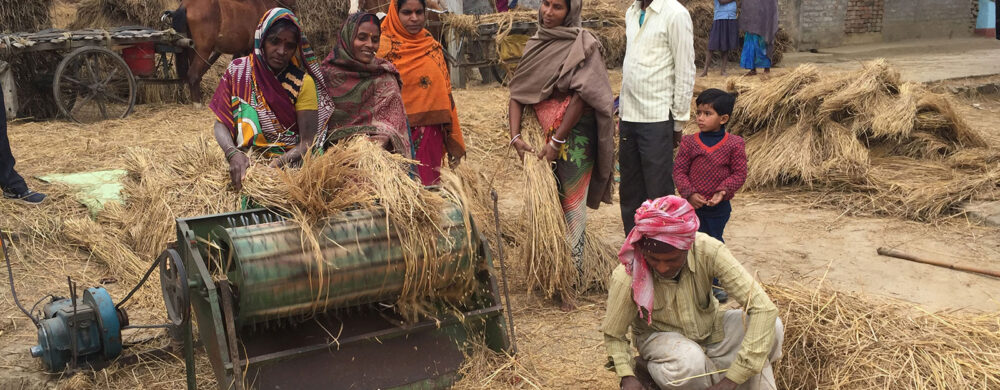
What is threshing?
For most grains, threshing is the second stage in the supply chain. The threshing process separates the grain from the rest of the plant. Usually this is completed by rubbing, stripping, or beating the plant. A combine harvester includes threshing capacities so that when a combine is used, threshing occurs in the field at harvest. When harvest is done manually or using a reaper, threshing can be done manually, using animal power, or using mechanical threshers.
What causes postharvest loss at this stage?
Cereal losses emerge at threshing due to grain spillage, incomplete separation of the grain from the chaff, and grain breakage due to excessive striking. Delays in threshing after harvest can also cause losses in quality and quantity of grain since moisture accumulation can encourage mold growth and other losses. Manual threshing is physically taxing and costly in terms of labor, which makes a transition to mechanical threshing appealing.
How large are threshing losses?
Losses depend on crop, technology and management. Under proper conditions, threshing loss with a combine harvester are near zero. Hodges, Buzby and Bennett (2011) reported threshing losses in rice to range from 1 to 5% using mechanical or manual methods. The Natural Resources Institute estimates threshing losses for maize in Africa to range from 1 to 3% (https://postharvest.nri.org/scenarios/grains).
What does research focus on?
Research on the threshing stage focuses the efficiency and adaptation of mechanical threshers. Minimizing breakage, increasing ease of use, especially for women, and developing multi-crop machine threshers are common concerns in thresher innovation.
To read related research articles, refer to the table below.
| Titles | Authors | Tags | Publication Date | Category |
|---|---|---|---|---|
Postharvest Losses Due to Harvesting Operations in Developing Countries: A Review | Paulsen, Marvin, et al. | Harvesting, Threshing, Maize, Oil Seeds, Paddy, Pulses, PHL Technology, Wheat | 2015 | Journal Article |
Hasan, Md. Kamrul, Md. Rostom Ali, Chayan Kumer Saha, Md. Monjurul Alam, et al. | Harvesting, Threshing, Paddy, PHL Technology | 2019 | Journal Article |
References: Hodges, R. J., et al. “Postharvest Losses and Waste in Developed and Less Developed Countries: Opportunities to Improve Resource Use.” The Journal of Agricultural Science, vol. 149, no. S1, Feb. 2011, pp. 37–45. Crossref, doi: 10.1017/S0021859610000936.

